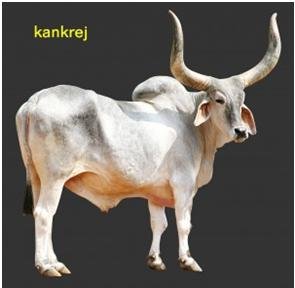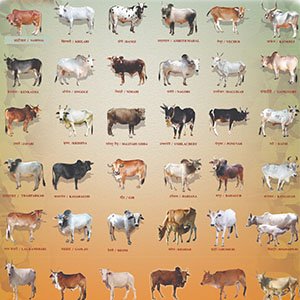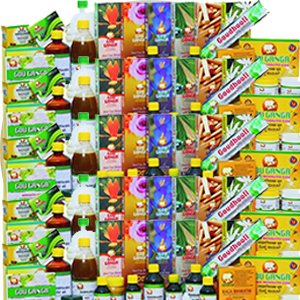An Intimate introduction of Cow

For those of us who grew up in villages, mention of cow brings nostalgia. Our dawn was through the cowshed, besides the house. Milking cows was a loving early morning ritual for the mothers. Mother would move to the shed with a shining pot, lovely stroke the cow on its back, calling it by the name. The milk that the cow spared for the household nourished the whole family, especially the children, even like it nurtured its own calf.
The cow is a moving temple, being abode of thirty three crore Gods of the Hindu pantheon. She has given sacred Panchagavya with immense medicinal value and is a moving hospital.
Cow is the mother of the universe (Gavo Vishwasya Matharaha). She helps in agriculture, transportation, food, health, industry, sports, and religious functions. From time immemorial, cow has a special place in Indian society.
Specialty
Characteristics of Cow
Overall Characteristics:
- The Indian cow belongs to Bass Indicus variety.
- High shoulder, flappy under-neck, and Suryaketu nerve on the back are easy differentiators of the variety.
- It is believed that Suryaketu nerve absorbs medicinal essences from atmosphere and makes the milk more nourishing. Cow urine & dung also of superior quality
Skin :
- High shoulder, flappy hanging dewlaps under-neck, and long ears increase the area of skin that sweats and keeps the body cooler. This is apt for our climate.
- Sweat glands are wider and the sweat is aromatic, protecting from monsoon-insects.
- The cow drives away insects by swift muscle movements
- With small hair, skin remains clean.
- With all these uniqueness, an Indian ox can work with comfort in rain and shine.
Tail :
- Long enough to touch ground.
- Tail joint is unique and allows swirling around till the neck.
- It also swats flies and insects.
Hoof :
- Joined, does not gather twigs and dirt.
- Indian ox has smaller and strong hoof. This is suited for ploughing and pulling cart.
- Some of the Indian varieties can work without horse-shoes.
- Unlike tractor, the ox does not harden the top soil and kill the helpful insects.
Chromosome :
- Different actions and features of the body are controlled by chromosomes.
- As a cow would always have adequate quantity of chromosome, there is no infertility for generations.
Life Activities :
- Basal metabolic rate(BMR) is the amount of energy expended while at rest in a neutrally temperate environment.
- Indian cow has a lower BMR. In draught it can survive with small quantity of food. Though it becomes weaker then, it recovers fast when it gets nourishment.
- Such temporary difficulties do not affect its milk yield or fertility.
Immunity to Disease :
- Cows are born with immunity to diseases. There is no difference between the ones grazing in the fields or kept in the sheds.
- This reduces the expenditure on their medical care.
- For this reason, America and Europe import Indian cows, cross breed with local variety to improve their immunity.
Efficiency :
- Indian ox has strong muscles and long legs. They work for long hours in difficult conditions.
- High shoulder holds the plough well.
Caring :
- Cows can be housed in very ordinary shed and even under a tree.
- Some Indian varieties require very little food.
- In villages they generally roam around fields and forests through the day.
Milk :

- Some Indian breed cows give up to 20 liters of milk per day.
- Main varieties of Indian milk cows are Gir, Sahival, Tharparker, Rati and Sindhi.
- We can improve other breeds by better care and nourishment.
Panchagavya :
- Constitutes cow urine, cow dung, milk, curd and ghee.
- Used as food, medicine, manure and insecticide.
- They increase immunity to diseases.
- Without side effects, they fight cancer, hypertension, skin diseases, and urinary diseases.
Sixth Sense
Sixth Sense of Cow
Cow has a sharp sixth sense. As per an epic story, the cow could once talk. It predicted an impending accident to its master and helped him avoid it. God then made the cow dumb for changing what was destined.
Cows respond to the joy and suffering of people. There are many examples of cows shedding tears and even refusing food empathizing with their masters.
Sensing Danger :
- Lathur in Maharashtra had a devastating earthquake on 30 September 1993. Devani breed of cows in that place had been behaving strange, crying and jumping around a few days before this as a warning to the people. We could not decipher the message.
- Similar things happened before Tsunami in 2004 too. Then, Baraguru, Amblacheri and Kangayam breed of cows behaved strangely. We could not get the message again.


